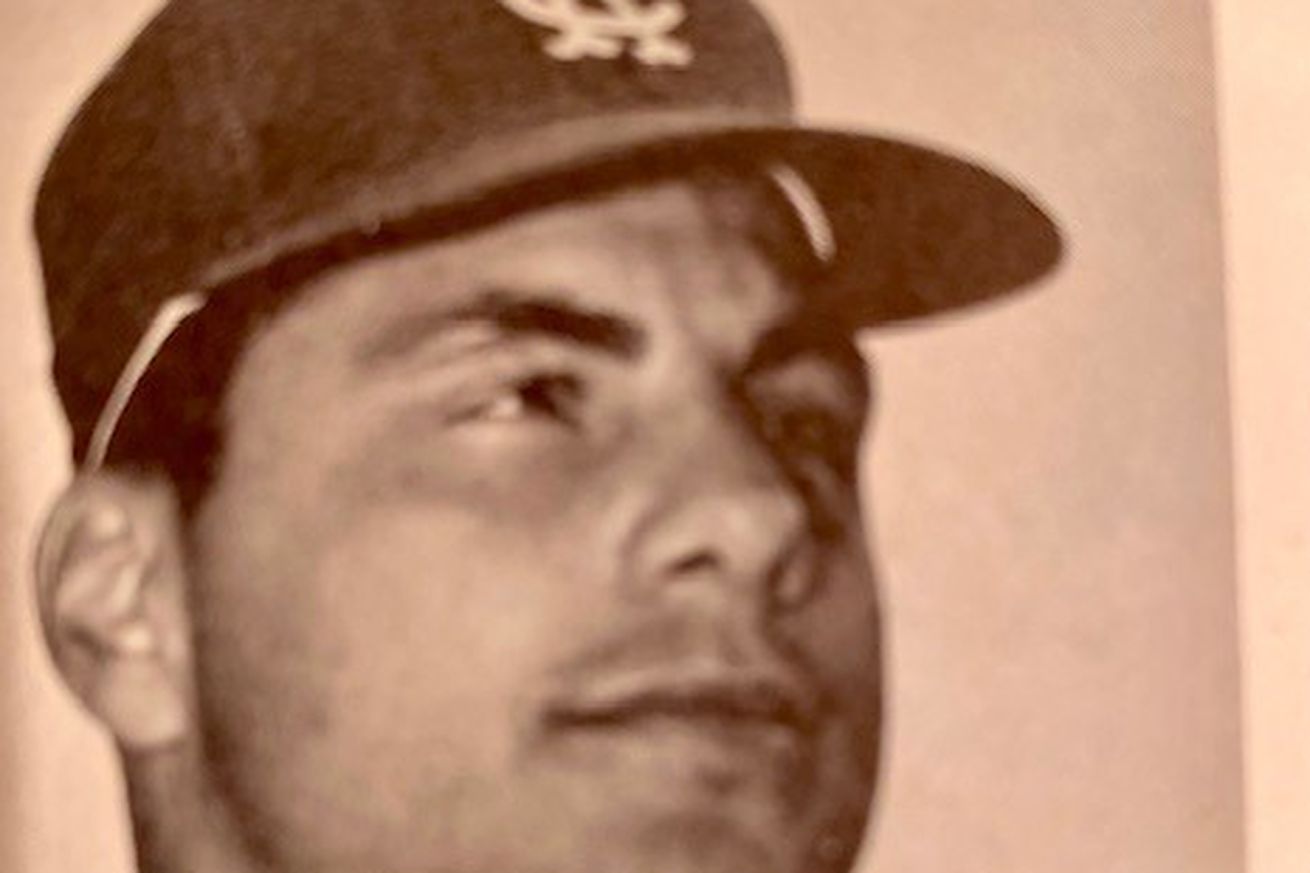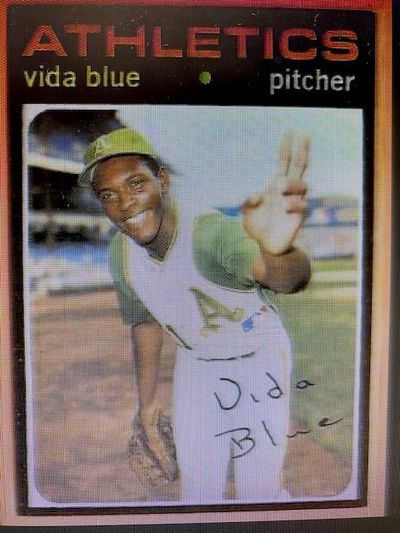
We’ve been there
Over the past week, we’ve all read multiple accounts of the last Athletics game in Oakland. In a nutshell, it’s been a colossal mess, a mess that could have and should have been avoided. In World War II parlance, it’s FUBAR.
The city of Oakland and A’s ownership have been negotiating on and off for over a decade without success. The centerpiece of the argument has always been about the A’s wanting a new stadium. And who’s going to pay for it? Ah, there’s the rub. The city of Oakland, and the club’s ownership, should have figured this out by now and had a new stadium built. I’m not going to rehash their misadventures.
For brevity, I’m going to call the old ballpark the Oakland-Alameda Coliseum. It’s gone by several different names over the years, but to me it’ll always be the Oakland Alameda-Coliseum. OAC opened for business on September 18, 1966, and housed the Oakland Raiders as well as the A’s. Any Kansas City sports fan worth their salt is well acquainted with the OAC. The Coliseum is now 58 years old and according to everything I’ve read about it over the years, it’s been a rough 58 years complete with sewage backups, leaking pipes, small locker rooms and a family of possums living on the premises. At 58, the OAC is the fifth-oldest ballpark still in use. Guess who sits at number six? That’s right, us. Kauffman Stadium just completed its 52nd season of operations.
Kauffman still looks great and fortunately is not beset by the same problems that made the Oakland Coliseum uninhabitable. But make no mistake, the Royals will eventually move to another location. Royals brass has made no secret of their desire to move downtown. A couple of months ago I wrote a piece about the possibility of the Royals moving out of Kansas City, which was not received well by the Royals front office. Or the readers of Royals Review. Or my neighbors. I’m still getting hate mail and the occasional egging of my house.
The Jackson County vote had just failed, by an overwhelming margin, and judging by online forums, people seemed to be 100% comfortable with the Royals leaving town, to say Nashville, instead of having any public money go towards building a new stadium. I got a cold pit in my stomach and for the first time ever, realized that yes, the Royals could move if negotiations go south, like they did in Oakland.
I bring that up only because in witnessing the sadness that is now overwhelming Oakland, it made me remember what I, and many of you felt with the very same Athletics left Kansas City after the 1967 season. It’s not a good feeling to have your baseball team move to another city. Ask old-timers in Brooklyn, New York about it. I’m guessing they’ll say they, and the borough, have never fully recovered. A couple of weeks ago, I stopped at 22nd and Brooklyn and revisited the site of Municipal Stadium. The neighborhood is very different now, quieter. Municipal was located within a neighborhood, with houses and schools literally across the street. There are very few of those ballparks left. Fenway and Wrigley, certainly. Target Field and Petco are located in new, urban neighborhoods, primarily condos. And that’s about it. Municipal was 49 years old when the Royals moved to their new digs. Kauffman is now older than Municipal. That fact makes me feel very old.
In sympathy with our Oakland brothers and sisters, here is a recap of the Athletics last game in Kansas City. This occurred on Wednesday, September 27th, 1967. It was a night game, the second half of what used to be called a twi-night doubleheader. Chuck Dobson, a Kansas City native and another of the Athletics young stars, had outdueled Gary Peters in the first game, a 5-2 Athletics win. The final games were in the middle of the week, school was in session and only 5,325 die-hard fans came out to send off the Athletics.
Granted, by that time, there was a lot of bad blood between the team and the fans brought on by the actions of Charlie O. Finley, the Athletics eccentric owner. Finley had been bad-mouthing Kansas City for years and people were tired of it. He had threatened to move multiple times, and many people thought Finley had a few screws loose. I think it’s safe to say that by this point Finley had no allies in city hall, at the Kansas City Star or among what few fans remained.
Still, it hurts to lose your ball team and serious baseball fans could see that better days were ahead for the Athletics. Major League Baseball had instituted a draft a few years before, and the Athletics had hit it out of the park. Their first-year selection was outfielder Rick Monday. In the second year, they nabbed Reggie Jackson. They also drafted or signed players such as Vida Blue, Rollie Ringers, Sal Bando, Joe Rudi, Blue Moon Odom, Gene Tenace and Catfish Hunter. The city had a couple of solid stadium proposals on the drawing board, but there was just too much bad blood with Finley, who desperately wanted out of Kansas City. He even went as far as to call Kansas City a horseshit town and said that no one will ever do any good there. Finley was an inventive owner who had some good ideas over the years, but he was his own worst enemy when it came to dealing with the city and the fans. Leopards don’t change their spots. Finley had many of the same problems after his move to Oakland.
The Athletics opponent in that last game was the Chicago White Sox (another team with some 2024 problems). The Sox came into this game with a record of 89-69. This was back in the days when the American League was just one division. Whoever won the American (or National) league went to the World Series. Everyone else went home to their off-season jobs. The Sox eventually finished three games back of the “Impossible Dream” Boston Red Sox. At the time of the Kansas City game, they were mathematically alive, as were the Detroit Tigers and the Minnesota Twins. That was one heck of a pennant race.
The Athletics starting pitcher that night was Jim “Catfish” Hunter, a 21-year-old wunderkind already in his third season. Hunter was already showing signs of greatness. In 1967 he started 35 games, threw 259 innings, completed 13 of those games and despite his record only being 13-17, he had a sparkling ERA of 2.81.
Kansas City fielded a lineup of Ted Kubiak at short, John Donaldson at second, Mike Hershberger in right, Ramon Webster at first, Monday in center, Jim Gosger in left, Bando at third and Phil Roof behind the plate.
The White Sox countered with Kansas City native Ken Berry in right, Don Buford at second, Tommy Agee in center, Ken Boyer at third, Tommy McCraw at first, former Athletic Rocky Colavito in right, Ron Hansen at short, Duane Josephson behind the plate and Joe Horlen, a 19-game winner with a 2.06 ERA on the mound.
Hunter was dealing, throwing four and 2/3 innings of no-hit ball before Hansen knocked a fifth-inning single. Horlen was almost as effective, only allowing a third-inning single to Hunter and a fourth-inning double to Webster, both of which were stranded.
The Athletics finally broke through in the bottom of the sixth. Hunter led off with another single. Kubiak singled as did Donaldson, which plated Hunter with the first run. After a Hershberger groundout, Webster drilled a sharp single which scored Kubiak and Donaldson.
Wilbur Wood came on in relief and Monday promptly reached on an error. Gosger singled to right loading the bases. The Sox countered with Bob Locker, who uncorked a wild pitch with Sal Bando at the plate, which scored Monday with the fourth run of the inning.
The White Sox got a one-out double from McCraw in the seventh, but Hunter stranded him by getting Colavito and Hansen on fly balls. Don Buford drew a walk in the 9th but was unable to advance. And that was it. Hunter was masterful, throwing a three-hit shutout in the finale.
Jim Gosger collected the last Athletics hit in Municipal, with an eight-inning single. I wonder what happened to that ball?
Here’s a trivia question for you. Who was the last Athletics player to hit a home run in Municipal? That would have been Ramon Webster, way back on September 2, a two-run shot off Baltimore’s Eddie Fisher. That blow provided the winning runs in the Athletics 8 to 6 victory.
After the final game at Municipal, the Athletics then went on the road for three games at Yankee Stadium. This was back in the days when the Yankees were also bad. The last Athletic home run came off the bat of catcher Dave Duncan, an eighth-inning solo shot off Mel Stottlemyre. Duncan later went on to some acclaim as a pitching coach while one of Stottlemyre’s sons pitched for the Royals. Jim Gosger collected the last hit, a ninth-inning single off Stottlemyre, while Sal Bando made the last out on a flyball to right. And that as they say, is all she wrote. The Athletics came back to Kansas City, packed up their belongings and moved west.
Municipal set empty for the 1968 season, while the Athletics, in their shiny new home, turned in a winning season, going 82-80-1. Yes, good things were happening to them. They won their first division title in 1971 and in 1972, the first of three consecutive World Series titles. Our guys had turned into a dynasty. It was a bittersweet time, as I still looked at the Athletics players as Kansas City’s. As the A’s were popping champagne corks, I couldn’t stop myself from thinking, those World Series flags should have been flying in Kansas City. The Athletics, then and now, stand as a cautionary tale in how greed, bad ownership and inept city leadership can tank a franchise and rip the heart out of a city. The arrival of the Royals in 1969 helped soothe the hurt.
The Royals’ departure from Municipal didn’t carry the same emotional weight, as they were moving just a few miles east on I-70 to a gleaming new stadium. John Mayberry had the honor of hitting the last Royal home run in Municipal, a three-run shot off Vida Blue (who began his career as a Kansas City Athletic draft choice). There’s some significance to that home run. Mayberry and Blue were both lefties and in 1972 Vida was at the height of his powers. You had to be a man to hit a home run off Vida. Mayberry was an ascendant star, a rare power hitter who could hit for average and draw walks.

Ed Kirkpatrick collected the last Royal hit in Municipal with an eighth-inning single off Rangers pitcherr Steve Lawson in the final game. In a classy final gesture, Royals manager Bob Lemon pulled Mayberry, Amos Otis, and Freddie Patek in the ninth inning of the finale so the fans could acknowledge their contributions to the Royals’ early success. In another strange twist, the game marked the final managerial efforts of Lemon (who had been unceremoniously sacked by Ewing Kauffman) and the Rangers skipper Ted Williams, who elected to concentrate more on his business ventures and fishing.
After the final game was played, the fans who remained were well-behaved. No one ran onto the field and there was no vandalism, only a few fans remained around the respective dugouts and a few in the lower concourse, taking one last look at the field before the lights went out.
